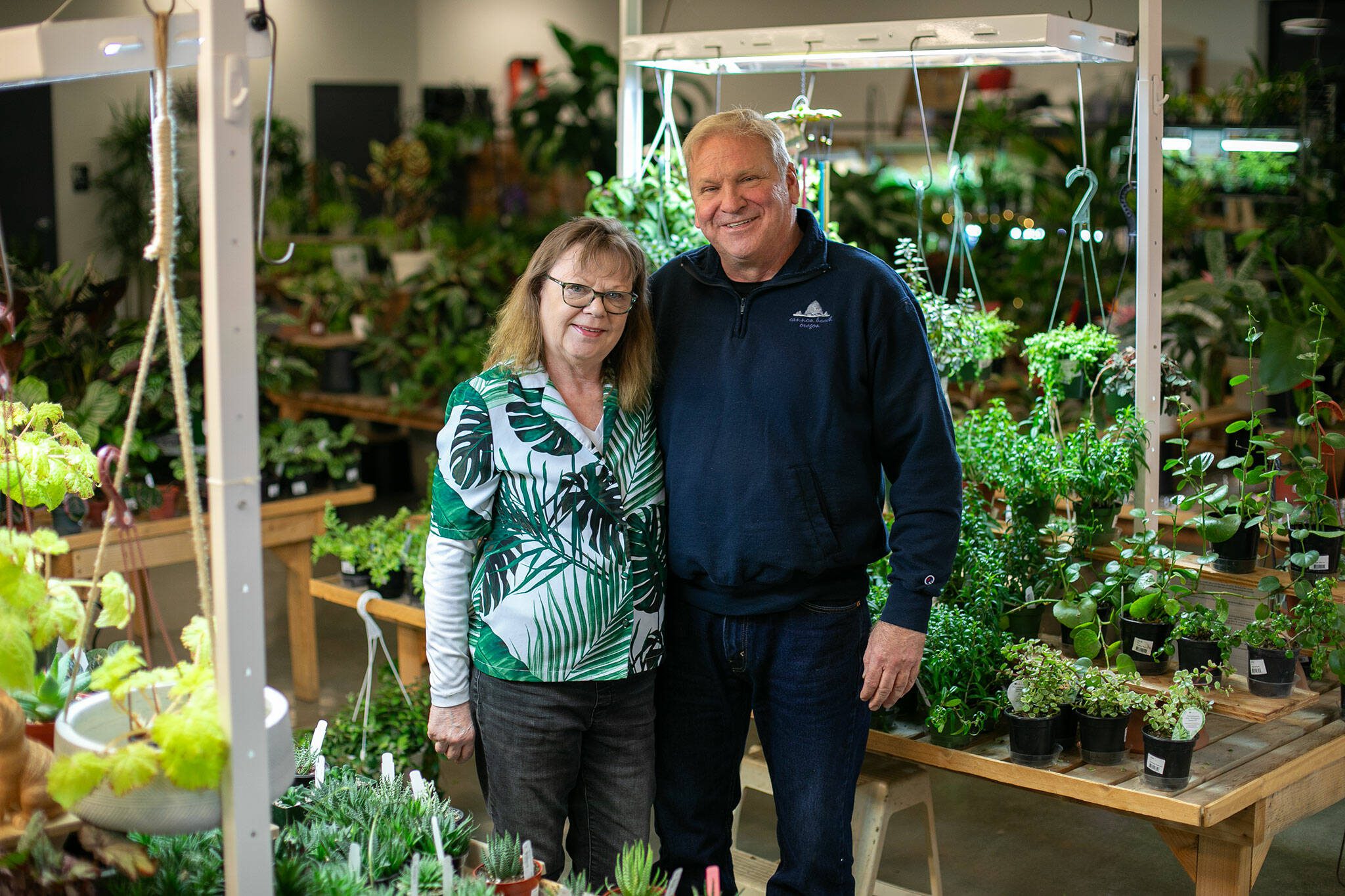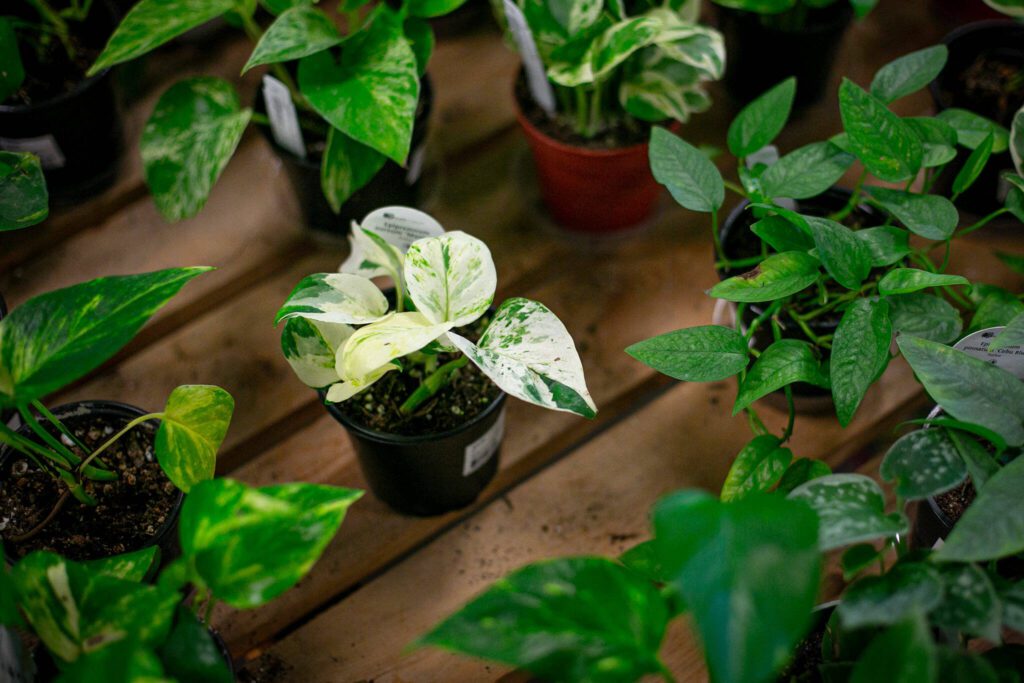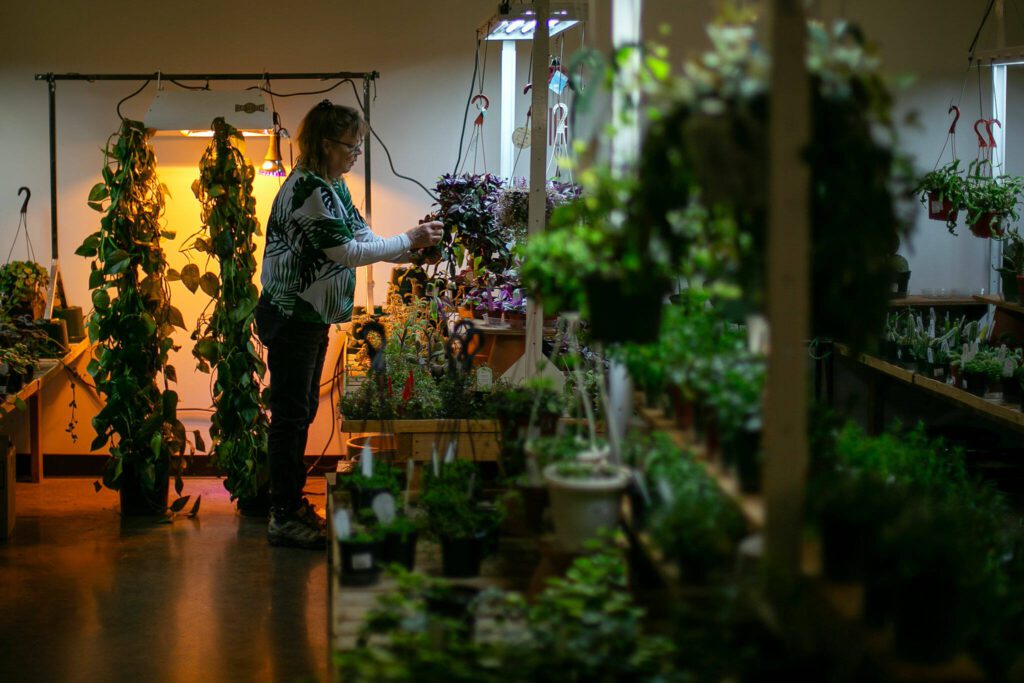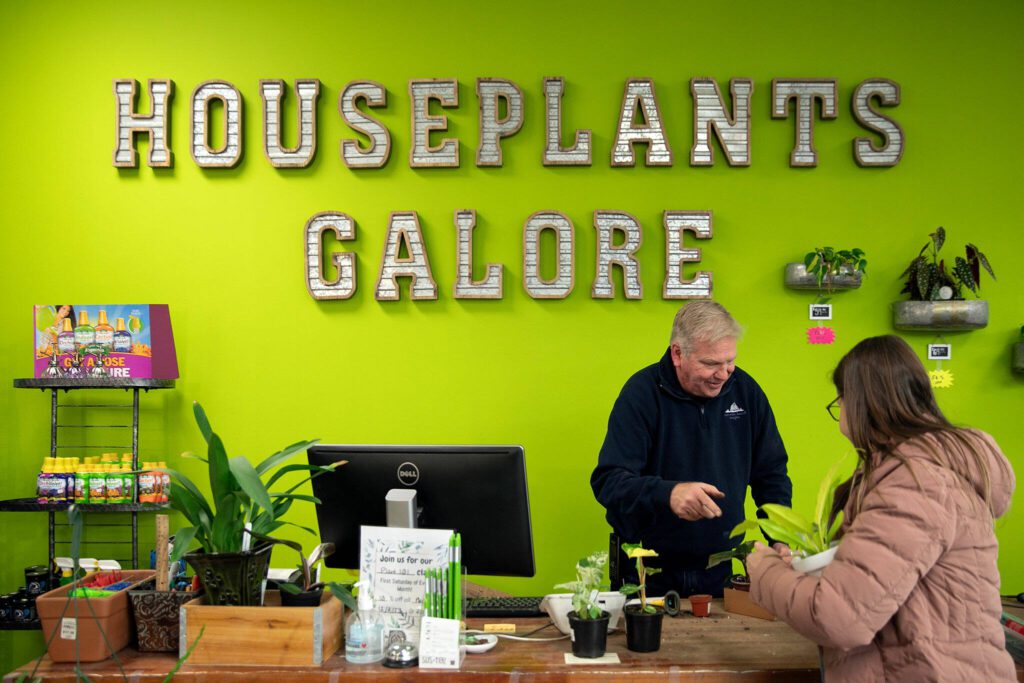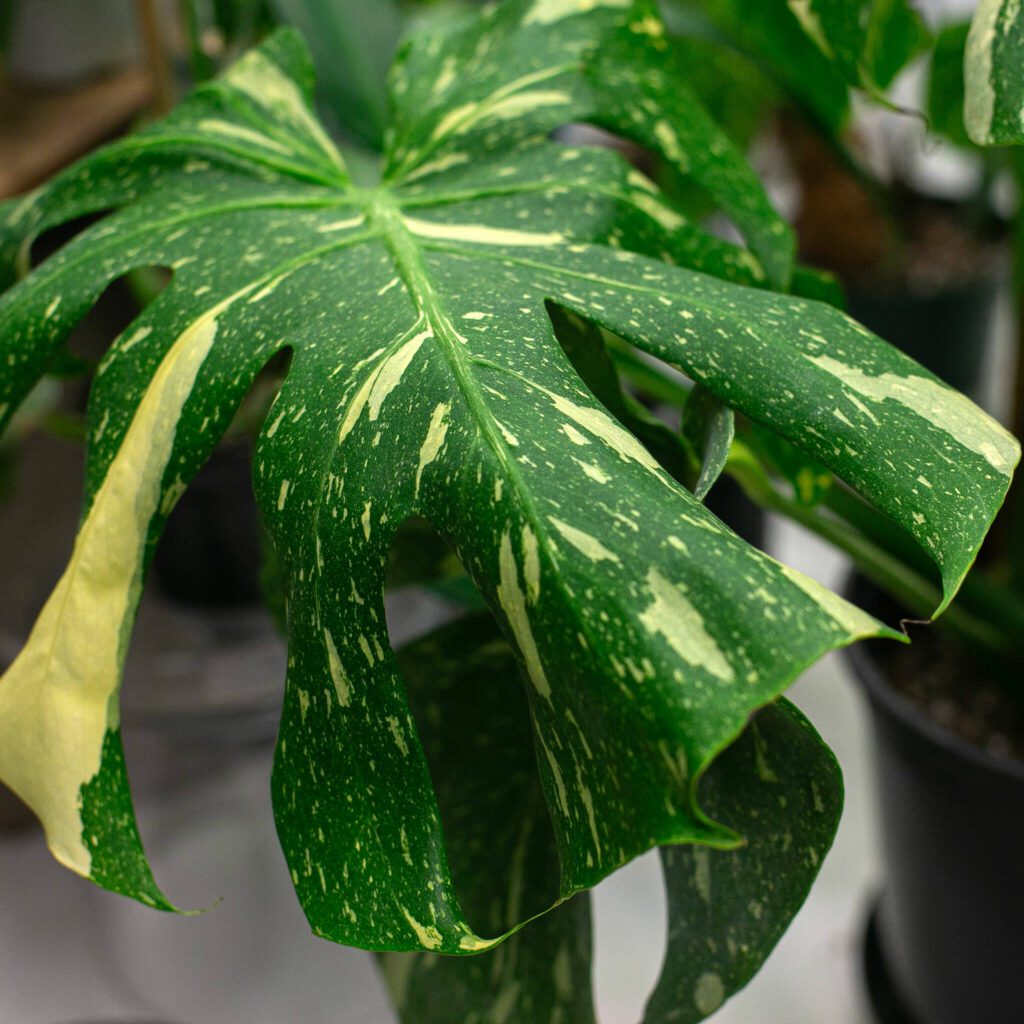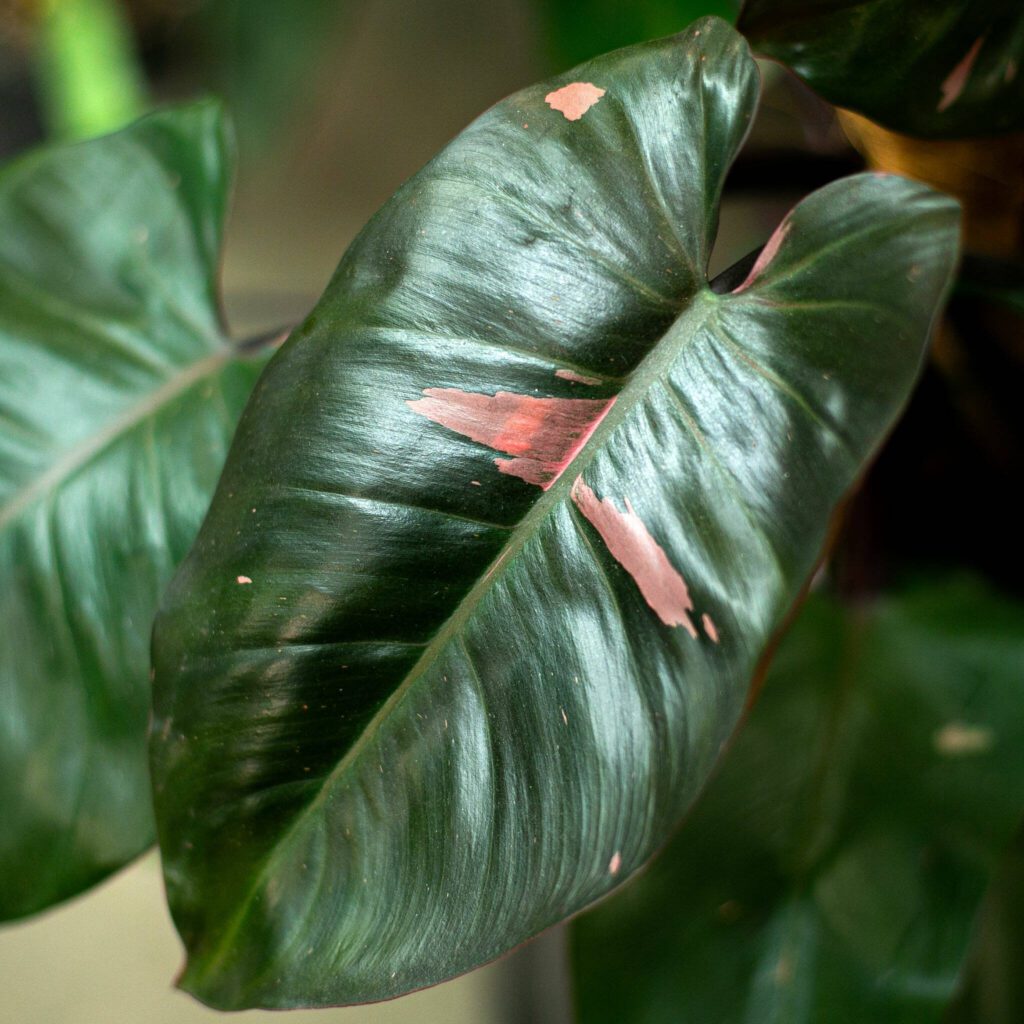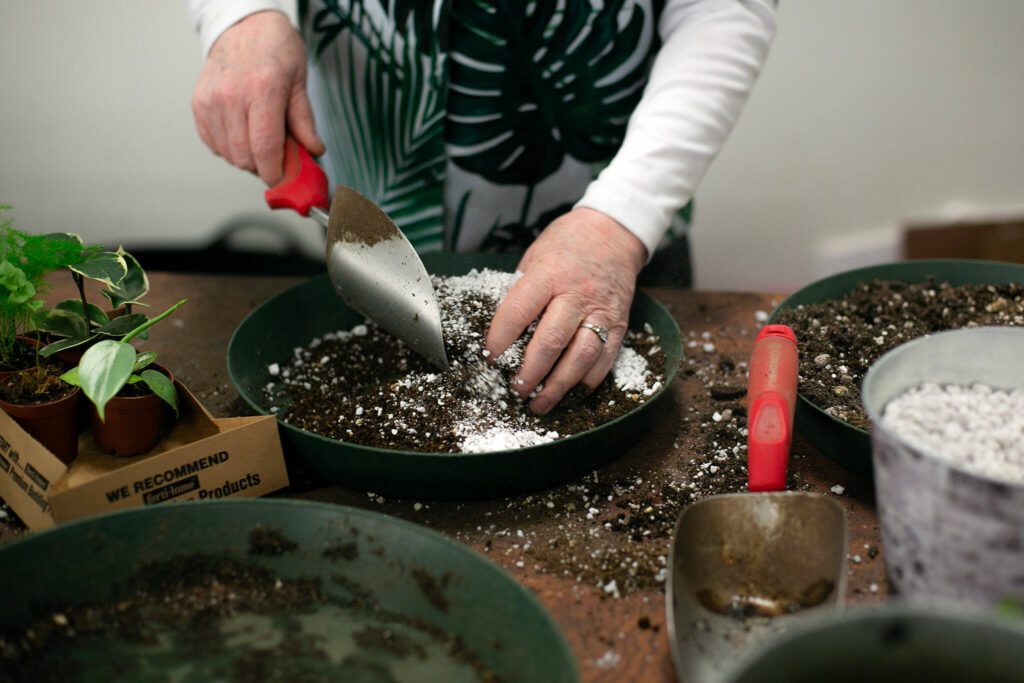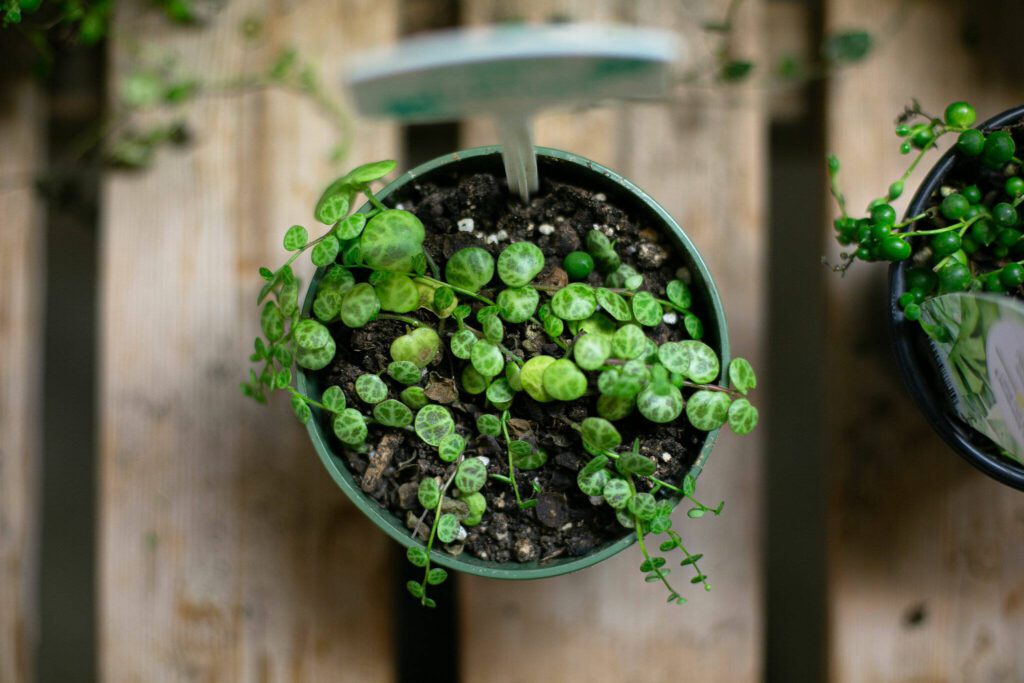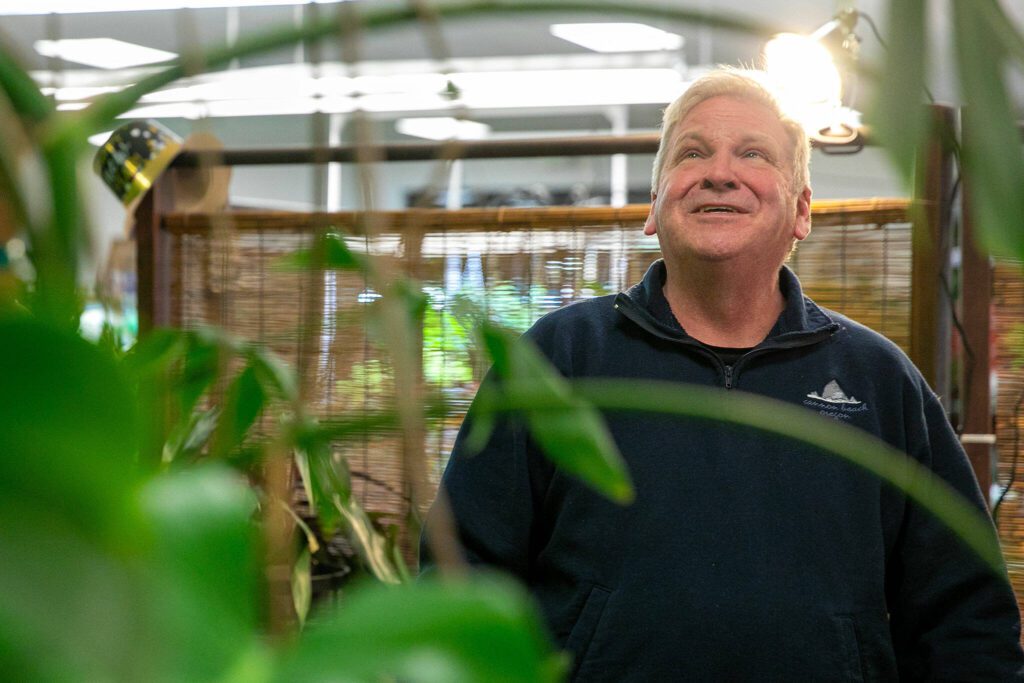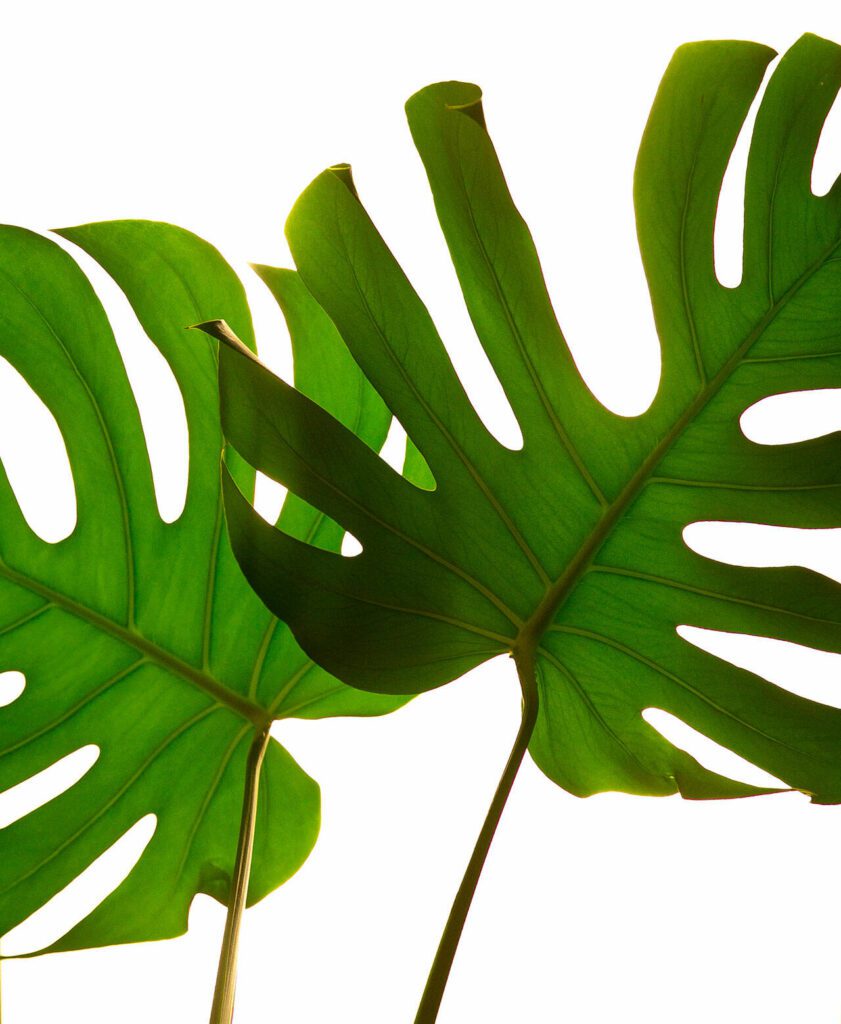By Sara Bruestle / Special to The Herald
As you step into Houseplants Galore, it’s as if you’ve crossed into a jungle.
You’re greeted by a monstrous Monstera plant looming over you at 10 feet tall, with its long, spindly roots trailing to the floor and its huge, split leaves reaching up toward the ceiling.
With today’s houseplant craze, this Monstera deliciosa is just waiting for a customer with enough space in their heart — and home — for it to grow.
Houseplants Galore specializes in plants that thrive in the great indoors. The Everett store carries over 300 varieties of 100 species of houseplants – from the common to the rare – plus offers repotting services, custom-mixed soils and weekend plant classes.
Among the denizens of their jungle, Philodendron and Strelitzia – and yes, Monstera – plants are what owners Steve and Carrie Compton call “showstoppers.”
With their striking appearance and easy-going nature, it’s no wonder these tropical beauties have become so popular in recent years. As their popularity has grown, so too has interest in the rare varieties.
“We go through a lot of them,” Steve Compton said. “People especially love the variegated varieties.”
Here’s a snapshot of three of the showiest plants available at Houseplants Galore – the rarest of which have become status symbols.
Marvelous Monstera
Monstera plants are native to Central and South America. They are known for their large, glossy leaves and unique leaf shapes. Some leaves are split, while others have deeply serrated edges.
The most common species are Monstera deliciosa and Monstera adansonii. These plants are collectively nicknamed the Swiss cheese plant for their leaves full of holes.
Some of the most sought-after Monstera plants have variegated leaves, meaning they exhibit different colors.
The Monstera deliciosa “Thai Constellation” is a relatively new Monstera variety. This plant has green and white variegated leaves with splashes of cream and yellow coloration. The unique patterns on the leaves resemble star constellations.
Fancy Philodendron
Philodendron plants also are native to Central and South America. They’re recognized by their large, glossy leaves and climbing habits. Their leaves can be green, coppery, red or purplish.
One of the most common species is Philodendron erubenscens, which has red stems, heart-shaped leaves and deep-red flowers.
Like the Monstera, the most coveted and rare Philodendron plants tend to have variegated leaves.
The Philodendron erubenscens “Pink Princess” is a gorgeous perennial featuring a rare green-and-bubblegum pink variegation.
Stunning Strelitzia
Strelitzia are banana-like plants native to South Africa. They’re nicknamed bird of paradise plants for their crane-shaped flowers – they really do look like birds!
The tropical plants with split leaves and woody stems grow tall – 6 feet in some cases.
The spiky blooms of the most common Strelitzia can be yellow and blue or orange and purple.
The rarest of the birds of paradise, and therefore the most sought-after, is the Strelitzia nicolai, or the white and blue variety.
“We don’t know what color the flowers are, because they’re not labeled with the color and they’re not brought in flowering,” Steve Compton said, adding that it’s difficult to get birds of paradise to bloom indoors in the Pacific Northwest because they need a lot of light to do so.
New growth
The Comptons opened Houseplants Galore at 15 SW Everett Mall Way just before COVID-19 hit. Houseplant sales boomed with the pandemic as more people were stuck at home, hoping to improve moods and spruce up rooms with a plant-keeping hobby.
“We got lucky,” Carrie Compton said. “Since we are licensed under a nursery and garden center, we were considered an essential business.”
The Comptons have been in the plant business since 2013 when they opened Li’l Sprout Nursery & Garden Center in Mill Creek.
When the lease on the Mill Creek nursery expired in 2019, the husband and wife searched for a new location. They decided to downsize from a nursery to a store, swapping their focus from outdoor to indoor greenery.
That same year, they closed the 3-acre nursery off Bothell-Everett Highway and opened a 5,000-square-foot storefront along SW Everett Mall Way.
With the move, they not only changed their business’s name – they changed their business model.
Steve, 61, a former home-security system designer, discovered his love of plants after he and his wife bought a home in 2002. He manages the store, orders the soils and does the payroll.
Carrie, 64, a former travel agent, helps her husband with the store. She orders the plants, designs the displays and waters the pots.
“We thought we’d need to bring hoses in here, but all we do is take a watering can around,” she said. “We put saucers under each of the plants, so that when we do water, it doesn’t spill on the floor.”
Approaching 50, Steve needed a change. As he was channel surfing, he was inspired to draw up a business plan.
“I see this guy out of Canada, selling plants from a nursery in his yard,” he said. “I thought, ‘I can do that.’”
With his new career in mind, he earned an associates degree in horticulture and greenhouse management at Edmonds College in 2012.
His love of plants continues to grow as he learns more about their needs as indoor companions.
“The interesting thing about botany is, there’s always something more to learn about it,” Steve Compton said. “I know more today than when we opened in 2019.”
Go-To Houseplants
If you don’t know which plant to get, this is the list for you. Steve and Carrie Compton share seven of their go-to houseplants.
Rattlesnake plant, scientifically known as Goeppertia insignis, is fancied for its striking leaves that resemble the patterns found on a rattlesnake’s skin. This tropical beauty’s leaves move with the sun: They spread with the light and fold up at night.
Pothos (Epipremnum aureum) is a perennial featuring large, glossy, heart-shaped leaves. The variegated ones are most prized: they are green and cream in color, with patches of white or yellow. The plant’s trailing vines make it perfect for hanging baskets or trellises.
String of Turtles (Peperomia prostrata) gets its common name from its tiny leaves. The vining succulent’s leaves resemble the shells of miniature turtles that have been strung together. The plant’s adorable leaf shape makes it a favorite in fairy gardens and glass terrariums.
Goldfish plant (Columnea nematanthus) has small, thick, shiny, dark-green leaves and colorful flowers that look like goldfish. The lipped blooms may be red, orange or yellow. A cousin to the African violet, they’re a popular choice for hanging baskets or tabletops.
Money tree (Pachira aquatica) is revered for bringing good luck and fortune wherever it goes. A popular housewarming gift, this braided plant with glossy greenery is both tall and handsome. You won’t ever need to prune it – but it can reach an impressive 6 feet tall.
Moon Valley (Pilea mollis) is named for its deeply dimpled leaves thought to look like the craters and valleys on the moon. The leaves, which are bushy in nature, sport yellow-green shades and dark copper veins. The plant’s size makes it suitable for windowsills and tabletops.
Coffee plant (Coffea arabica) has glossy green leaves and small white flowers that bear half-inch cherries that will darken from green to black. Each cherry contains two seeds, which eventually become coffee beans. But don’t expect to brew coffee with your plant’s fruit – it takes 750 beans to make enough ground coffee for a standard pot.
Caring for your houseplants
The following are care tips for your indoor plants from Houseplants Galore owner Steve Compton. As he’s repotting your plant – it’s a service the store provides – he’ll likely go over these pointers with you.
Overwatering kills. Indoor plants don’t need as much water as their outdoor counterparts. Stagnant water in pots will lead to root rot, so it’s important to let the soil dry between waterings. Try watering once every two weeks.
Wash roots before planting. Root washing is the practice of flushing any stagnant water from your plant’s roots to ensure a healthy start for your indoor addition.
Customize the soil. Avoid repotting your plants with soil that is mostly peat moss. Peat moss holds water. Indoor plants thrive in aerated soils. Mix your potting soils with bark, sand and perlite to lessen the amount of peat moss.
Avoid chemical fertilizers. Do feed your plant, but give it organic over chemical fertilizers. Nutrients found in nature provide a plant the strength to deal with stress.
Watch for plant stress. Yellowing, browning or leaf and flower drop are signs of plant stress. These are signs your plant isn’t thriving in its growing conditions – meaning there could be issues with water, light, pests, temperature and/or humidity.
If you go
Houseplants Galore, at 15 SW Everett Mall Way, offering indoor plants, houseplant accessories, repotting and consultation services, and weekend plant classes, is open 10 a.m. to 6 p.m. Monday-Saturday and 10 a.m. to 5 p.m. Sunday. Call 425-482-5276 or visit houseplantsgalore.com for more information.
Sound & Summit
This article is featured in the spring issue of Sound & Summit, a supplement of The Daily Herald. Explore Snohomish and Island counties with each quarterly magazine. Each issue is $4.99. Subscribe to receive all four editions for $18 per year. Call 425-339-3200 or go to soundsummitmagazine.com for more information.
Talk to us
> Give us your news tips.
> Send us a letter to the editor.
> More Herald contact information.
